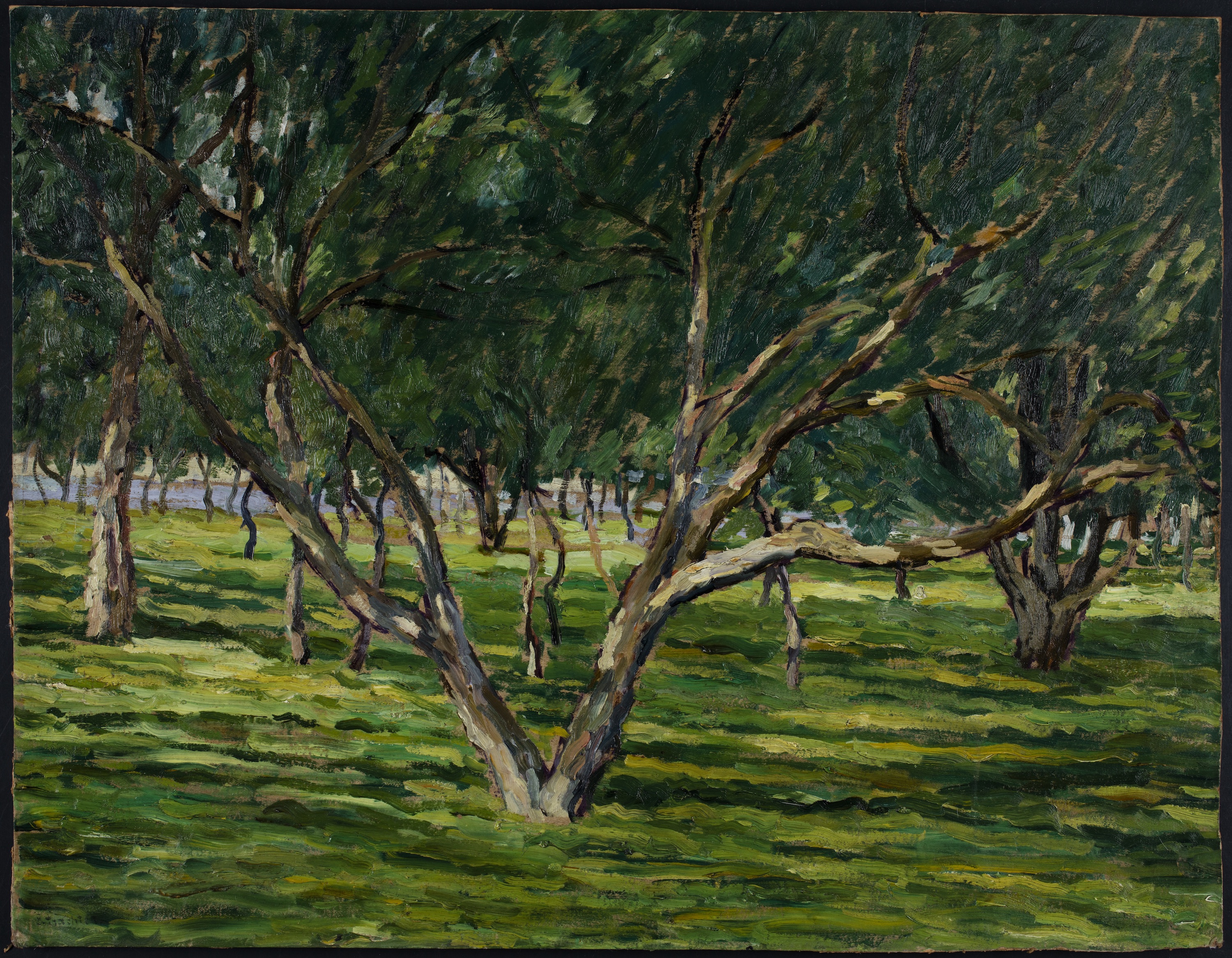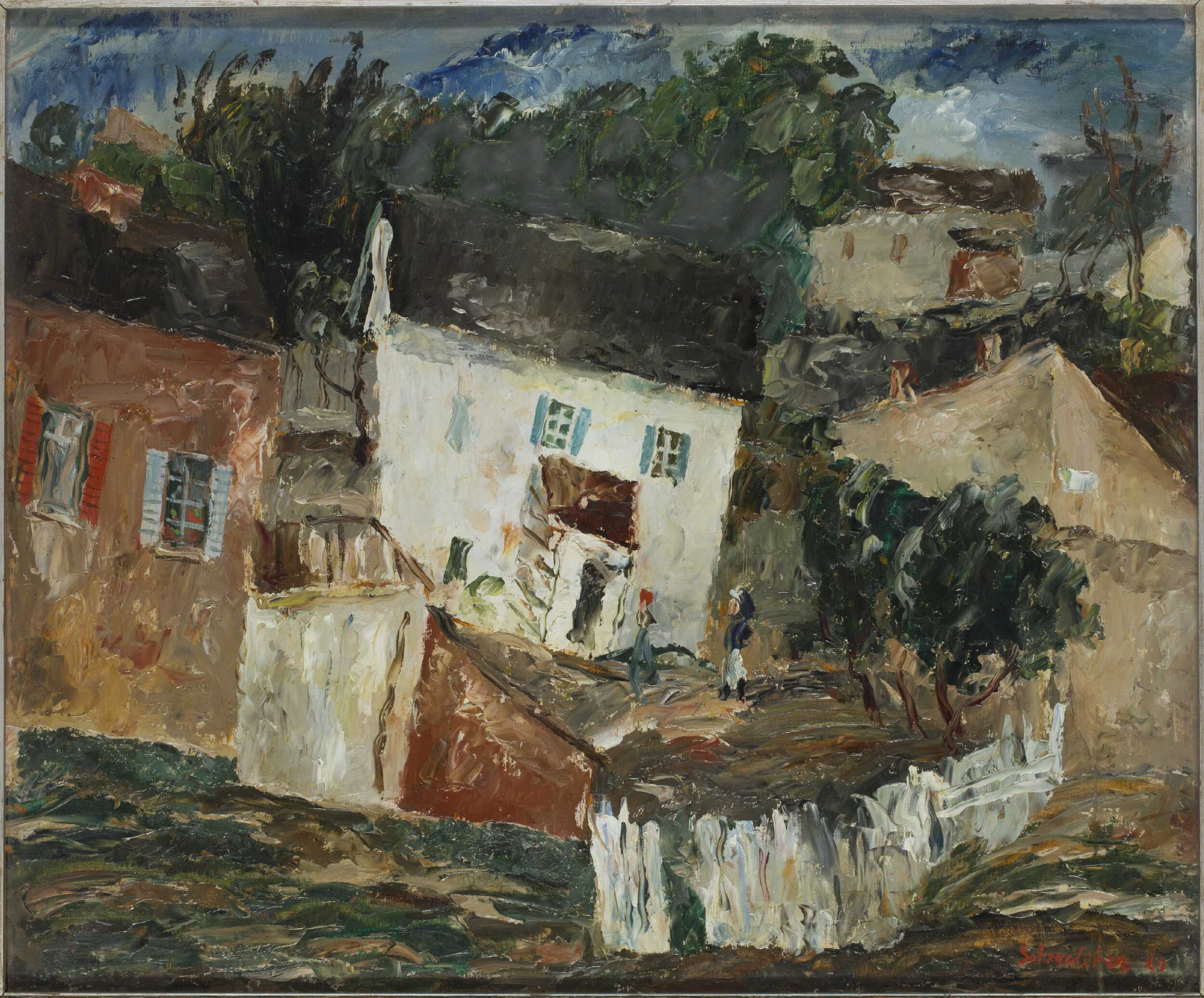On this day in 1943 the people of the Warsaw Ghetto started an uprising to oppose Nazi Germany's final effort to transport the remaining ghetto population to the Majdanek and Treblinka death camps. The uprising started when the ghetto refused to surrender to the police commander Jürgen Stroop, who ordered the burning of the ghetto, block by block, ending on 16 May. A total of 13,000 Jews were killed, about half of them burnt alive or suffocated.
Today we present a very calm painting created by the Jewish Artist Symcha Trachter. With intense colors, thick impasto, and dynamic representation of nature, The Orchard displays all the traits characteristic to the artistic output of Symcha Trachter. The work was produced around 1928, during the painter’s stay in France.
Symcha (Simon) Trachter was born in Lublin on 16 September 1894. He came from an assimilated, wealthy family of a Jewish merchant. His hometown greatly influenced his work and inspired many of the cityscapes painted by Trachter. Little is known about the artist’s childhood, his attitude towards the faith of his ancestors, or his fluency in Yiddish. Thanks to his family’s affluence, he was able to devote much of his time to learning to draw and paint. He attended art schools in Warsaw, Kraków, and Vienna. The turning point in his career was his stay in Paris from 1925 to 1929. In France, Trachter was able to compare his own art with the output of his contemporaries. This led him to introduce fundamental changes in his painting style. After he returned to Poland in 1930, the first exhibition of his works was organized in the building of the Jewish Association for the Promotion of Fine Arts in Warsaw. From that moment on, Trachter quite regularly had his paintings exhibited for the public.
The outbreak of the war found Trachter in the Polish town of Kazimierz Dolny; no information has been preserved on what happened to him in the first months of the military conflict. In 1940, he already resided in the Warsaw ghetto. At the turn of 1941 and 1942, the Warsaw Judenrat was granted enough funds to renovate the meeting room in its seat at Grzybowska Street. The refurbished room was to be decorated with a wall painting depicting Job. Three artists were commissioned for the project: Trachter, Feliks Frydman, and Samuel Puterman. In May 1942, having worked for nearly half a year, Trachter put a finishing stroke on his last ever painting. By financing the renovation works, the Germans were probably trying to lull the vigilance of the ghetto residents. A mere two months later, they launched the Grossaktion (Great Liquidation Action). On 25 August 1942, Trachter was captured and most likely died in Treblinka. The seat of the Judenrat together with the wall painting and the entire ghetto was brought to the ground.
We present today's work thanks to the Jewish Historical Institute in Warsaw. More Symcha Trachter works and pieces by other pre-war Jewish artist are available to view on the Delet Portal.
P.S. Erna Rosenstein has a fascinating story. She was a Holocaust survivor, a Communist, and most importantly—an artist.


 Symche Trachter
Symche Trachter